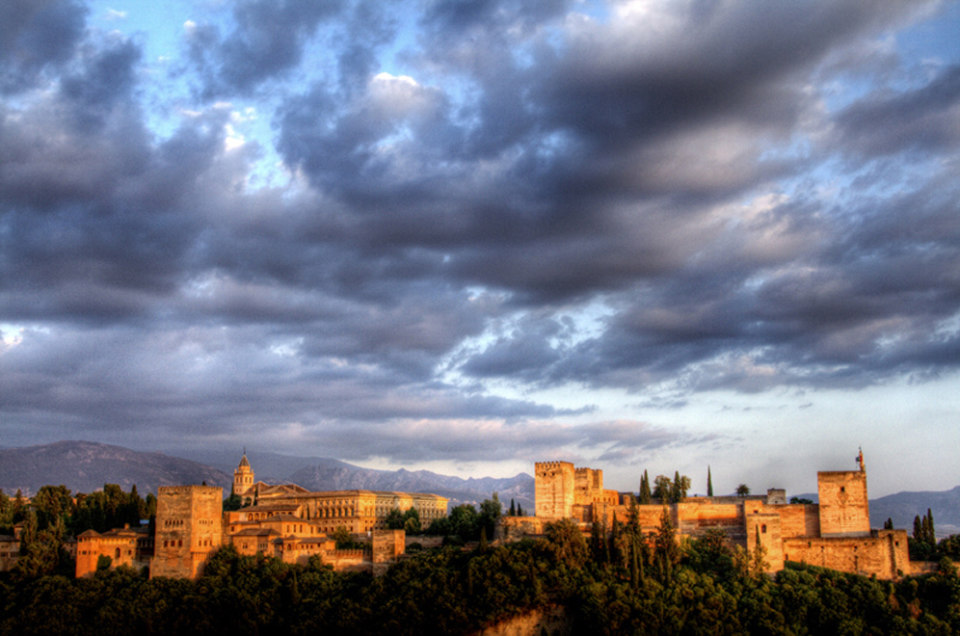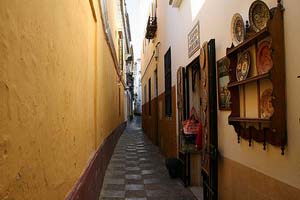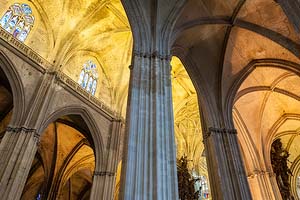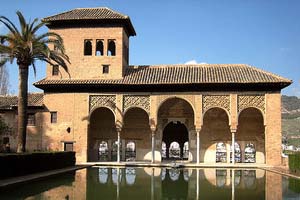Tell people in southern Spain you’re related to Washington Irving, and you’ll be treated like a celebrity.
Best known for tales like “The Legend of Sleepy Hollow” and “Rip van Winkle” in the U.S., the 19th-century writer is so famous in Spain, a trail in its Andalucia region bears his name.
In the U.S., signs often brag, “Washington slept here.” But in Andalucia – the home of stirring flamenco music, the very soul of Spain – the slogan you hear or read is “Washington Irving slept here.”
The most celebrated place where the New York writer and diplomat slept during his 1829 visit – the Alhambra, the palace, fortress and gardens complex in Granada built by the Moors in the 12th to 14th centuries – so inspired him, he immortalized it in his “Tales of the Alhambra.”
Spaniards love Irving because his book of folk tales about Granada did much to popularize the myth of romantic Spain. Today, road signs mark the “Route of Washington Irving,” the author’s 130-mile journey from Seville, where he lived for nearly a year, to Granada.The route, past crumbling Moorish fortresses, Roman ruins and picturesque walled towns – closely follows Andalucia’s A-92 highway.
A beautifully-illustrated guidebook of the same name makes it easy to trace Irving’s footseps while explaining how the rich blend of Muslim, Christian and Jewish cultures make the architecture, history, food and crafts of Andalucia so distinctive, and how centuries ago these groups co-existed in harmony in southern Spain. The book, published by Turismo Andaluz, part of the regional government, describes the route, recognized as a European Cultural Itinerary by the Council of Europe.
Having a long-dead writer as your tour leader – and not just anyone, but the illustrious biographer of Christopher Columbus and Mohammed, historian, U.S. Ambassador to Spain, the first American writer to be internationally famous, and the so-called “Father of the American Short Story” – can be fun. But Irving is also the best possible guide: not overly intrusive, only around when you need him to provide a sharp observation or a bit of poetry.
Start in Seville, which reminded Irving of “A Thousand and One Nights.” Here he lived in the Santa Cruz Quarter, a labyrinth of narrow alleys, wrought-iron balconies and whitewashed walls lit by lanterns at night. His house, at 2 Agua Street – its colonnaded patio overflowing with plants – still stands.
Irving’s time in Seville was spent doing research in the archives of the Cathedral: the world’s biggest Gothic church, and without doubt the only one featuring a former Muslim minaret, now topped by a Renaissance-style bell tower.
After Seville was reconquered by Christians from the Moors in 1248, the Cathedral was built on the site of their 12th-century Great Mosque. But the minaret remains from its Moorish days.
The Alcazar, or Royal Palace, is nearby, so Irving must have passed it often and admired the Moorish design of its lace-like stucco work, multi-colored mosaic tiles and patios, captivated by the Oriental glamour of southern Spain. The Moors, he wrote, brought “a higher civilization, and a nobler style of thinking into Gothic Spain.”
In Alcala de Guadaira, the town near Seville crowned by a 12th-century Moorish fortress with 11 towers, Irving took a stab at being a food critic. About its excellent bread, he wrote, “The fountains of Alcala are almost as praiseworthy as its ovens; in fact, the delicacy of the bread is largely due to the clarity, sweetness and purity of its waters.”
But it was in his inn at Loja – a town about 25 miles from Granada – that he heard the stories that galvanized his imagination: Moorish folk legends, and tales of bandits and smugglers.
Arriving in Granada, his last stop, Irving wrote: “In the distance was romantic Granada, surmounted by the ruddy towers of the Alhambra, while far above it the snowy summits of the Sierra Nevada shone like silver.”Awestruck by the Alhambra, famed for its palaces, gardens, fountains and reflecting pools, Irving praised it as a mecca for tourists. “To the traveler imbued with a feeling for the historical and poetical, the Alhambra is as much an object of devotion as is the Caaba to all true Muslims.”
He rented rooms in the Alhambra’s Palace of Charles V, a 16th-century Renaissance-style building – today, a fine arts museum – for a few months. Devoting his days to research in the ancient university library, Irving spent nights swimming in the reflecting pool of the Patio de los Arrayanes (Myrtles), in the center of the Alhambra’s Comares Palace.
Sunset, he wrote, was the best time at the Alhambra, when its “melancholy effulgence” caused a rosy glow.
The Albaicin, the old Moorish quarter located on a hill opposite the Alhambra, is today a maze of narrow streets alive with restaurants, Moroccan-style bazaars, and handicraft workshops.
Leaving Granada, Irving penned this farewell:
“I paused to take a last look at Granada…and thus ended one of the pleasantest dreams of a life which the reader perhaps may think has been too much made up of dreams.”
Back in the U.S., Irving wrote ‘Tales” and built an eternal reminder of his dreams of Spain – the place he called “a country apart; severed in history, habits, manners and modes of thinking from all the rest of Europe.” His home, in Tarrytown, in Westchester, N.Y. – he dubbed it “Sunnyside” – was topped by a Spanish-style tower and overlook the Hudson River.
Irving, who never married, died in 1859. Today, visitors to the carefully restored Sunnyside can browse among memorabilia of the author’s travels in Spain and elsewhere in Europe.



